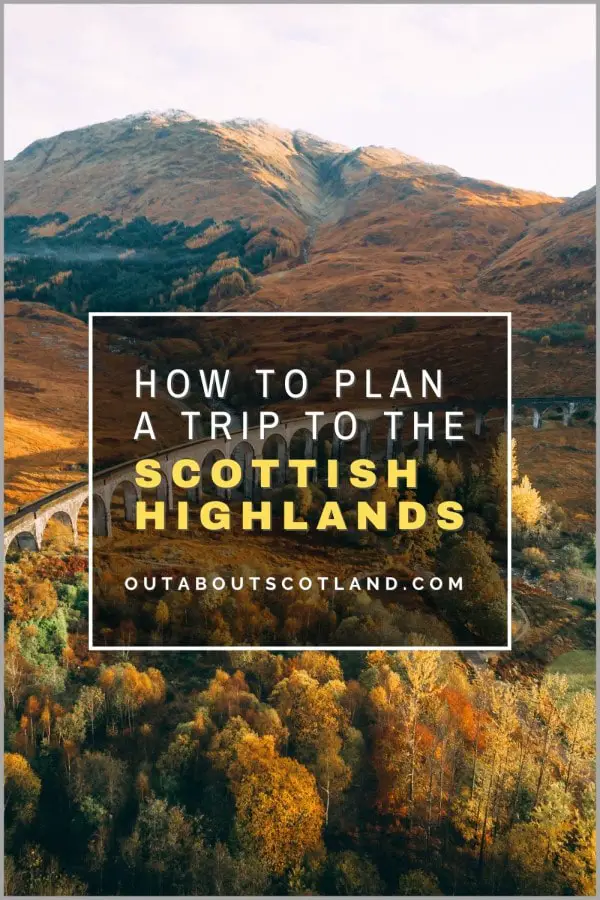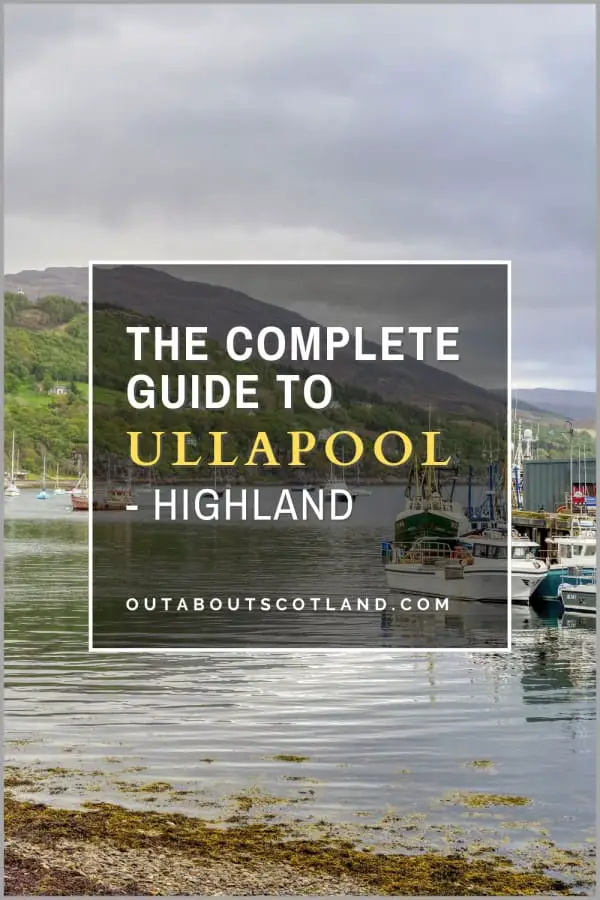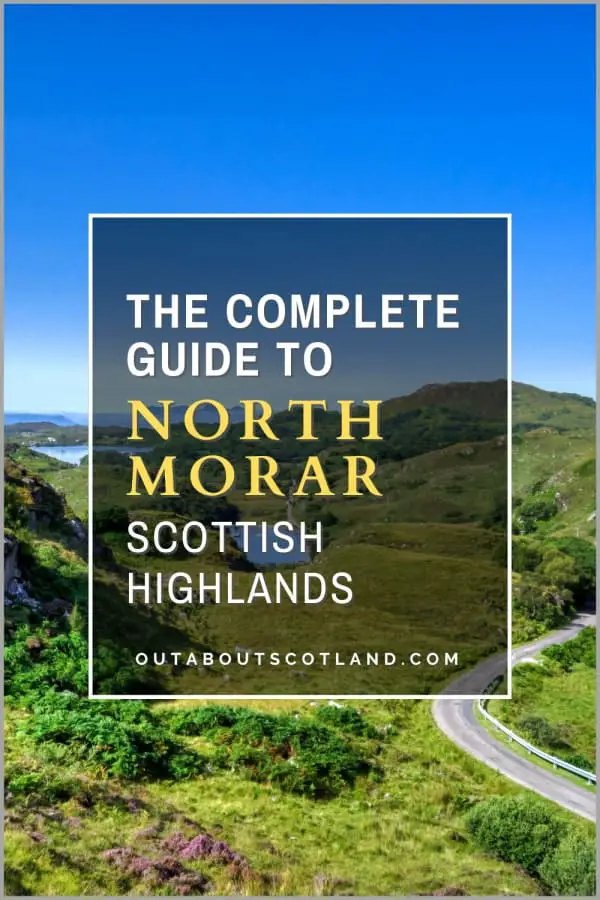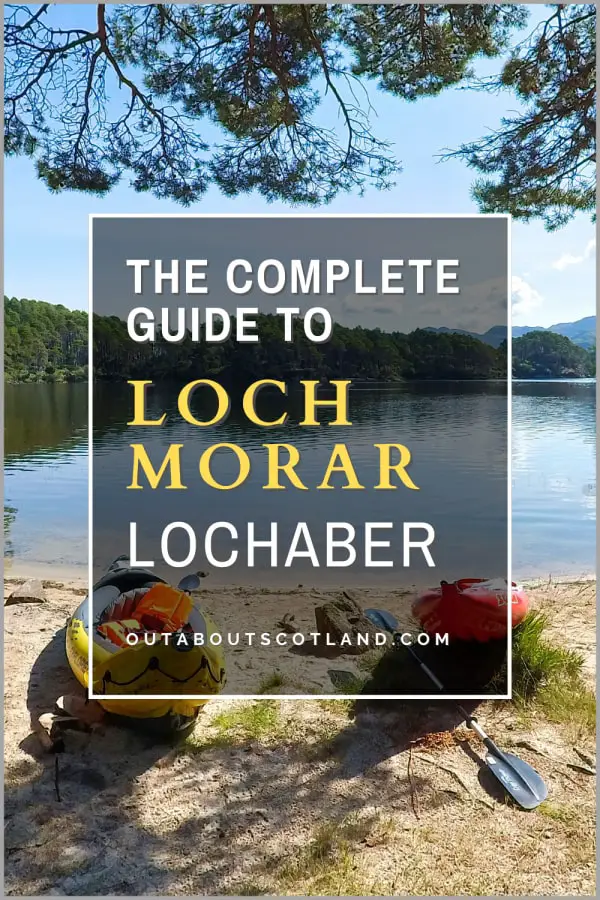The Scottish Highlands are a wild and mountainous region situated in the northwest of Scotland.
Although the region covers 9,906 square miles, it’s home to just 600,000 people, making it one of the most sparsely populated areas in Europe.
Visitors to the Highlands can immerse themselves in a landscape of serene lochs and towering mountains, along with some of Scotland’s largest forests and a rugged coastline that’s rich with wildlife.
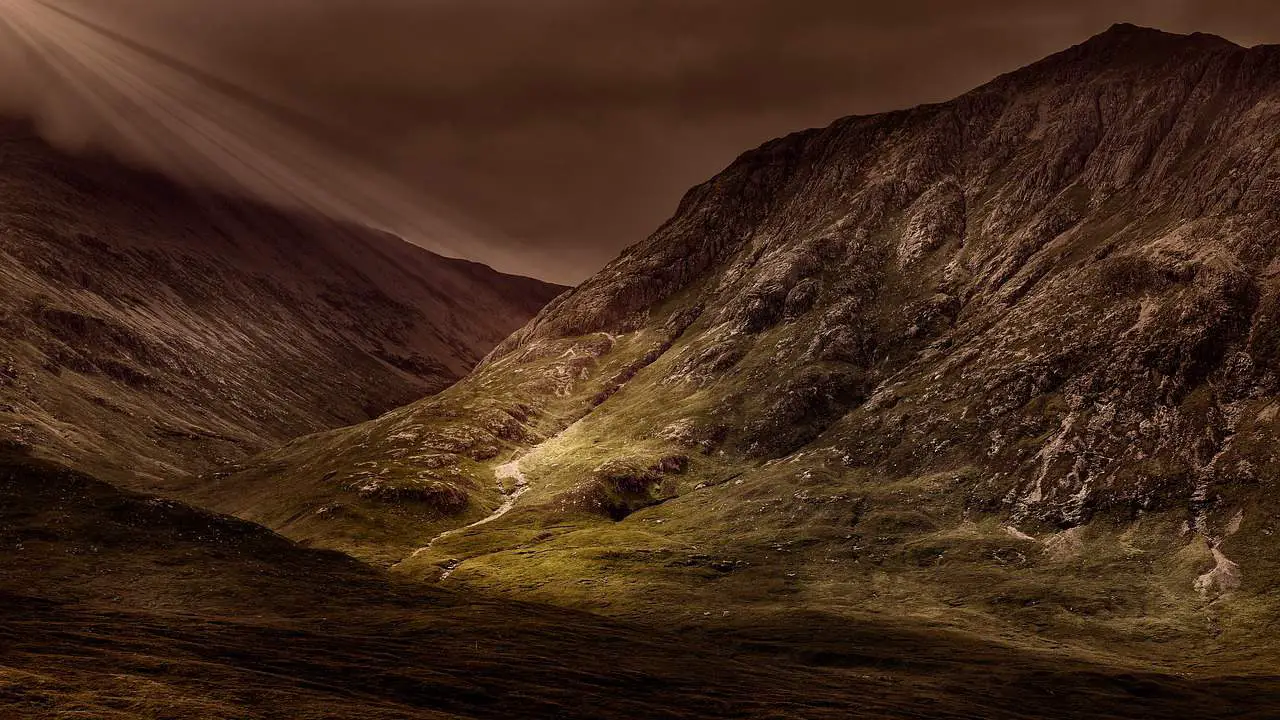
Touring the Scottish Highlands
There has been a recent uptick in the popularity of private, small-group tours of Scotland among retirees, lone travellers, and middle-aged couples.
Smaller buses are a more comfortable and convenient alternative to the massive coaches of yesteryear. If you’re uneasy riding with a big bunch of strangers, you might like to choose smaller buses that seat no more than sixteen passengers rather than standard-size coaches, which may hold as many as fifty.
You’ll get to see parts of Scotland that passengers of cumbersome forty-foot vehicles never get to see thanks to the fact that these short-wheelbase vehicles can easily navigate the country’s small, winding roads.
If you’d like to visit the Scottish Highlands on a mini-coach tour I highly recommend Rabbie’s. This tour operator has been running since 1993 and exclusively uses small tour buses in groups of a maximum of 16 people so you’re guaranteed to make new friends on each trip.
Rabbie’s drivers are experts in all things Scotland so you’ll hear a few fascinating – and hilarious – tales as you make your way around the most beautiful parts of the country. To book a sightseeing tour of the Scottish Highlands or to find out more information about the different tours you can take around the Highlands, check out the Rabbie’s website.

Here’s an example itinerary of what you can expect to see on a Rabbie’s tour:
West Highland Lochs & Castles 1-day Tour
Itinerary:
- Depart Edinburgh and head in the direction of Stirling to arrive at Doune Castle.
- Visit the castle then continue through Callander to Loch Lubnaig.
- Stop at Loch Lubnaig, then drive to the Braes of Balquhidder.
- Continue to Kilchurn Castle and visit the loch and castle ruins before stopping for lunch.
- Head to Loch Awe and stop at the town of Inveraray near Loch Fyne.
- Explore the old jail in Inveraray and Inveraray Castle before continuing through the Arrochar Alps. Stop along the way for photos.
- Drive along Loch Long towards Loch Lomond. Stop at the village of Luss.
- Continue towards Stirling Castle for photos.
- Arrive back in Edinburgh.
Explore small group tours of Scotland with Rabbie’s
Protect Your Family From Scotland's Biting Midges
- Powerful, reliable protection for up to 8 hours
- Water- and sweat resistant
- Repels midges, mosquitoes, horse flies, sand flies, fleas and ticks
- Safe for use on adults, children over 30 months and pregnant women
- Non-sticky, moisturising with a pleasant fragrance
- Packaging may vary
Where Are the Scottish Highlands?
When you visit Scotland, you basically have three options for finding places to visit. First, you can do what most people do and head to the big cities of Glasgow and Edinburgh, with the latter playing host to the majority of the best tourist-friendly experiences that the country has to offer.
Second, you can go to the Hebrides islands and immerse yourself in their vast windswept beaches, and third, you can explore what I believe is the most beautiful part of the UK—the Scottish Highlands.
The Highlands are traditionally considered to be one half of Scotland, with the other being the Lowlands, and both areas are divided by the Highland Boundary Fault. This fault line starts near the area of Helensburgh (around 40 miles north of Glasgow) and extends all the way to Stonehaven in the northeast, with much of the landscape west of the fault pushed up in an enormous rift.

This fault line is the main reason why there are so many mountains in western Scotland, which couple with millennia of ice-age glaciers carving their way across the landscape has left behind the Highland’s famously high peaks and picturesque glens.
While the Lowlands are relatively flat, the Highlands are much more dramatic – think windswept moors surrounded by vast mountain ranges and you’ve pretty much got it – and they’re very sparsely populated, having one of the lowest densities of people outside of the great plains of Russia.
It’s not quite true to say that the Highlands follow the fault line in its entirety as the boundary turns north before it reaches the east coast and then arcs back towards the city of Inverness (the capital of the Scottish Highlands) in the area of the Moray Firth.
Everything north and west of this point (including the Orkney and Shetland Isles and the Western Isles) are also in the Highlands so I think you’ll appreciate it’s a pretty big area, and one that needs a lot of prior planning if you’re thinking of exploring it.
The Highland Boundary Fault:

The Weather and the Best Time to Visit the Highlands
If there’s anything that will have a big impact on your decision to visit the Scottish Highlands, it has to be the weather. Unlike the cities where it doesn’t really matter which month you plan your trip for, in the wild and exposed Highlands you’ll always be at the mercy of the elements, so choosing to come here in winter could mean you’ll have a downright miserable time.
Scotland’s winters generally last from November to February, but with global warming, it seems that Scotland is experiencing far milder temperatures than it once did. That being said, once you head into the more elevated regions, you’re almost guaranteed to experience 0 °C all day every day, especially in places like Braemar (officially the coldest place in Britain), where the lowest-ever recorded temperature was -27 °C (-16.6 °F).
Bear in mind that these temperatures plummet even further when you take wind chill into consideration. If you’re thinking of exploring the Highlands in winter, remembering the effects of wind chill can literally be a lifesaver.
To calculate wind chill, multiply the wind speed by 0.7 and subtract that number from the temperature, e.g., if the temperature is 5 °C and the wind speed is 10 mph, then 5 – (10 x 0.7) gives you a wind chill temperature of -2 °C, which is a considerable difference caused by little more than a stiff breeze.
On a positive note, if the main reason to visit the Highlands in winter is for snow sports then you’ll be pleased to know that here in Scotland we have pistes that rival the alps at the Nevis Range, the Cairngorms, and Glencoe.
On average, there are 100 days of snowfall each year in the Highlands, and due to the elevation, the snow usually lasts until April (Scotland’s snow sports season generally runs from November to April). This is also something to keep in mind if you’re thinking of driving in the Highlands in the winter, as many roads become impassable for days on end.

If you do find yourself driving through snow, keep an eye on the snow poles on either side of the road as they give an indication of where the road is as well as how deep the snow is. You’ll find more travel advice in this article, How to Tour Scotland in Winter which is a must-read for winter visits to the Scottish Highlands.
If winter sports aren’t part of your agenda, I would have to say the best time to visit the Highlands are the summer months (June, July, and August), as they have the longest days, the least amount of rain, and the highest temperatures.
I’ve compiled a few averages in the table below which shows the differences in Highland weather between January and August.
| Location | Max temp. °C | Min temp. °C | Sunshine hours | Rainfall mm | Rainy days |
|---|---|---|---|---|---|
| Braemar (Cairngorms) January | 4 | -2 | 30 | 105 | 16 |
| Braemar (Cairngorms) August | 18 | 9 | 145 | 70 | 12 |
| Inverness (North Coast) January | 7 | 1 | 40 | 75 | 14 |
| Inverness (North Coast) August | 19 | 11 | 135 | 60 | 12 |
| Crianlarich (Trossachs) January | 7 | 1 | 40 | 98 | 14 |
| Crianlarich (Trossachs) August | 16 | 11 | 145 | 52 | 11 |
Midges in the Highlands
There’s one big problem with visiting the northwest of Scotland, and it’s something that can ruin your entire summer holiday: midges. These tiny biting insects are prevalent throughout the Highlands, where they like to hunt for food anywhere that’s damp on days that are cool and have wind speeds under 5 mph (8.05 km/h).
On their own, these 1-3 mm insects are nothing more than a minor irritation, but they swarm in their thousands and are irresistibly drawn to human beings whose blood is a rich source of protein for them.
If you get stuck in the Highlands where there are midges (an estimate of their numbers is 181 Trillion) you’ll find it can be an unbearable experience. They tend to emerge from May to September, but that can change with a number of factors, including how cold the preceding winter has been and how warm it is later in the year.
My advice to combat these biting horrors is to take a look at this article: Avoid Midges in Scotland, and buy a bottle of Smidge anti-midge lotion (Amazon).
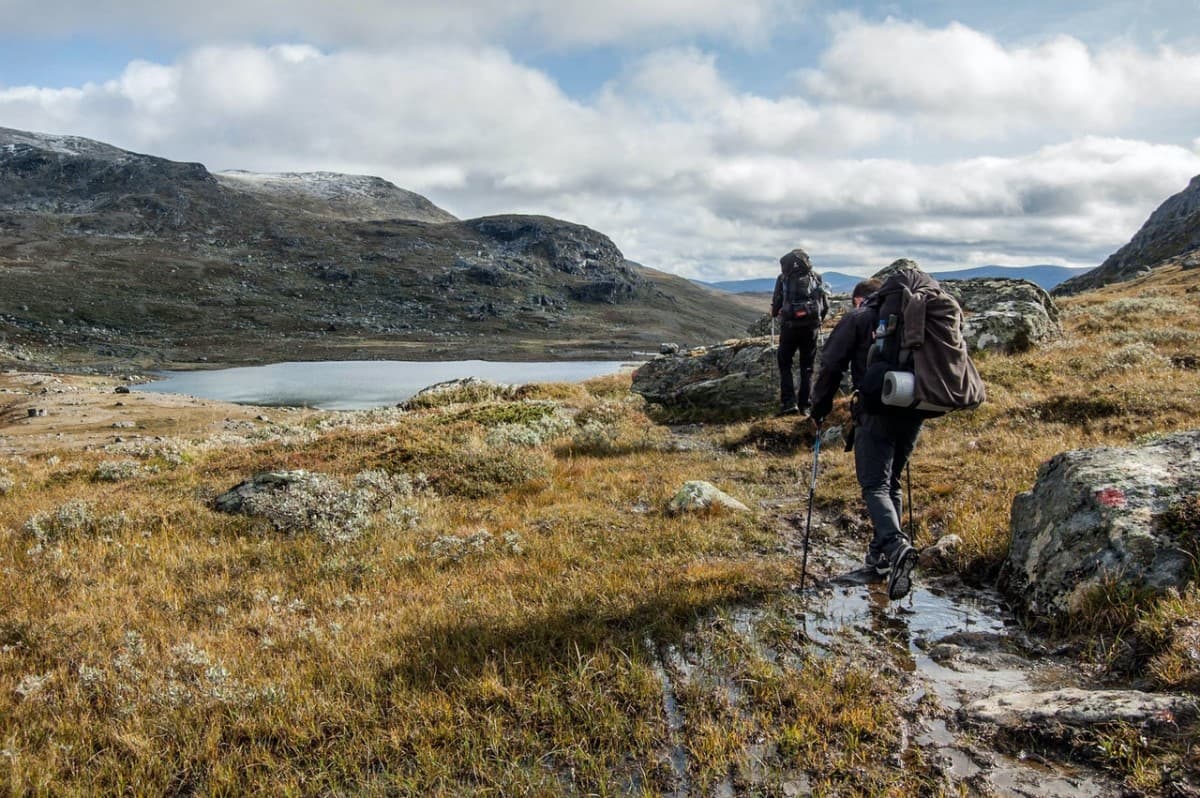
Book Tours in Scotland
Essential Gear to Pack for the Highlands
A visit to the Highlands can be an unforgettable experience, especially if you head into the mountains where it’s possible to enjoy an all-day hike and not see another person all day. If you really want to escape the hustle and bustle of the city, then the Highlands of Scotland need to be at the top of your list of places to go.
While these remote landscapes are undeniably beautiful they can also be deadly, with facilities that are few and far between, large areas of impassable bog and moorland, ridges with sheer-sided faces, and weather that can – and will – change to the extremes at the drop of a hat.
Obviously, you’ll have to pack extra gear in winter compared to summer, but there are a few essentials that you should keep with you at all times for no other reason than safety should you ever find yourself lost in the wilds of the Scottish Highlands.
This is what I keep in my backpack as a minimum, even in summer.
Please note, the following links are Amazon affiliate links.
1: Backpack waterproof cover. You will get caught in the rain at some point in Scotland, and there’s nothing worse than reaching into your backpack only to find a puddle of water at the bottom. Prevent water from soaking your clothes and expensive gear with one of these cheap waterproof backpack covers.
2: Pac-a-mac. They’re not exactly the height of fashion, but foldable waterproof jackets are unbelievably handy for coping with Scotland’s changeable weather. Roll it up and pop it in the bottom of your bag for those days when it’s too warm to wear a thick jacket.
3: Base layer. These thin long-sleeved shirts are designed for sports, but I’ve found them ideal for: A: an extra layer to pull on top of my T-shirt if it suddenly gets chilly; and B: something to cover my arms if there are too many midges about. Base layers roll into a tiny size and weigh next to nothing, so it’s worth keeping one in your bag at all times.
4: Convertible trousers. As I already mentioned, Scotland’s weather is changeable throughout the year so you’ll find yourself constantly veering between being too hot or too cold. One thing that helps enormously is wearing convertible trousers that have legs that can be quickly zipped off, thereby turning them into a pair of shorts.
5: Mobile phone with an OS Maps subscription. If you’re walking in the Highlands a map is essential for your safety. While waterproof paper maps and a compass are still the best options, if you’re on a short sightseeing trip, I highly recommend using your phone and the OS Maps app instead.
With the OS Maps app, your phone acts as a GPS receiver and overlays your position onto a highly detailed map of the Highlands, and it even shows you which way you’re facing.
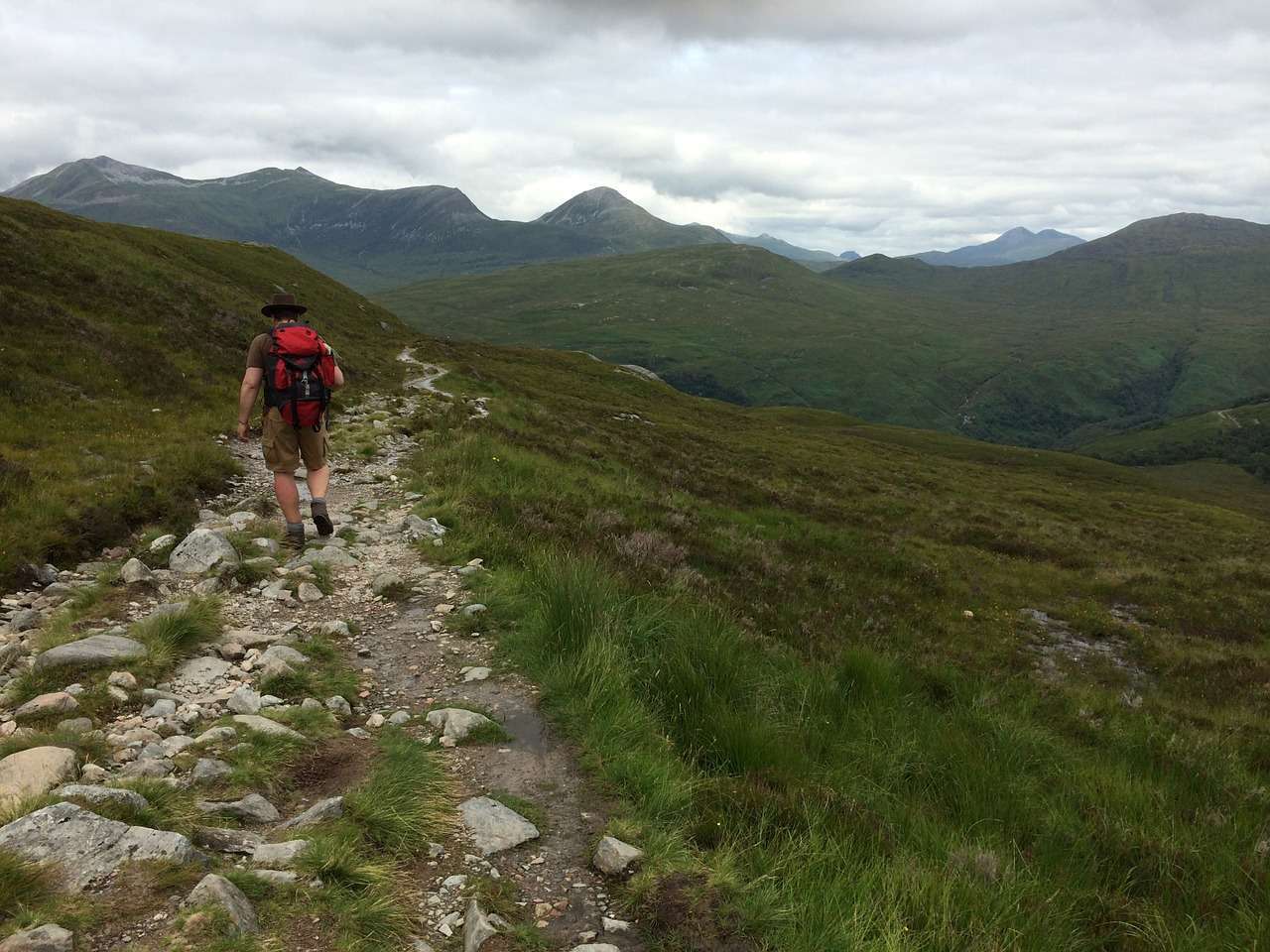
What to Pack for a Winter Visit to the Highlands
If you visit the Highlands in winter there will be a few additional items you need to take with you, primarily to keep you warm but also to keep you on track when snowfall covers the ground. The following is what I’ve whittled my gear down to after years of exploring the Highlands in winter:
1: Wrap up warm with several layers of clothing, and wear a sweat-absorbing base layer along with a rain and windproof jacket. You’ll lose a lot of heat from your head, feet, and hands, so always make sure you have a woolly hat, gloves, and thick socks to keep your extremities toasty.
2: I can’t overstate how important good-quality boots are in Scotland. Get a pair that has good grips (Vibram soles are best) and is waterproof, and make sure they have supportive ankle protection. I personally swear by Berghaus boots, as although they’re a wee bit more expensive, they last much longer than cheaper brands, plus they’re supremely comfy.
3: Pack high-energy food and drinks to replenish the energy you’ll be burning to keep warm in the cold. With regard to water, bear in mind that you should take 2 litres per person per day, and each litre weighs 1 kg. I take two bottles on my winter walks: one insulated Thermos flask for a cup of hot tea down the road, and a tough metal water bottle to keep me hydrated.
4: You’ll need somewhere to pack all that equipment away so a backpack isn’t just handy, it’s essential. The majority of people don’t need a top-of-the-range pack for short walks, so if you’re only visiting the Highlands on a day trip, you’ll be fine with any rainproof backpack costing under £30 from Amazon.
This article will help you choose a budget backpack: The 5 Best Lightweight Backpacks to Use in Scotland, which lists small backpacks that are perfect for a brief sightseeing tour of the Highlands.
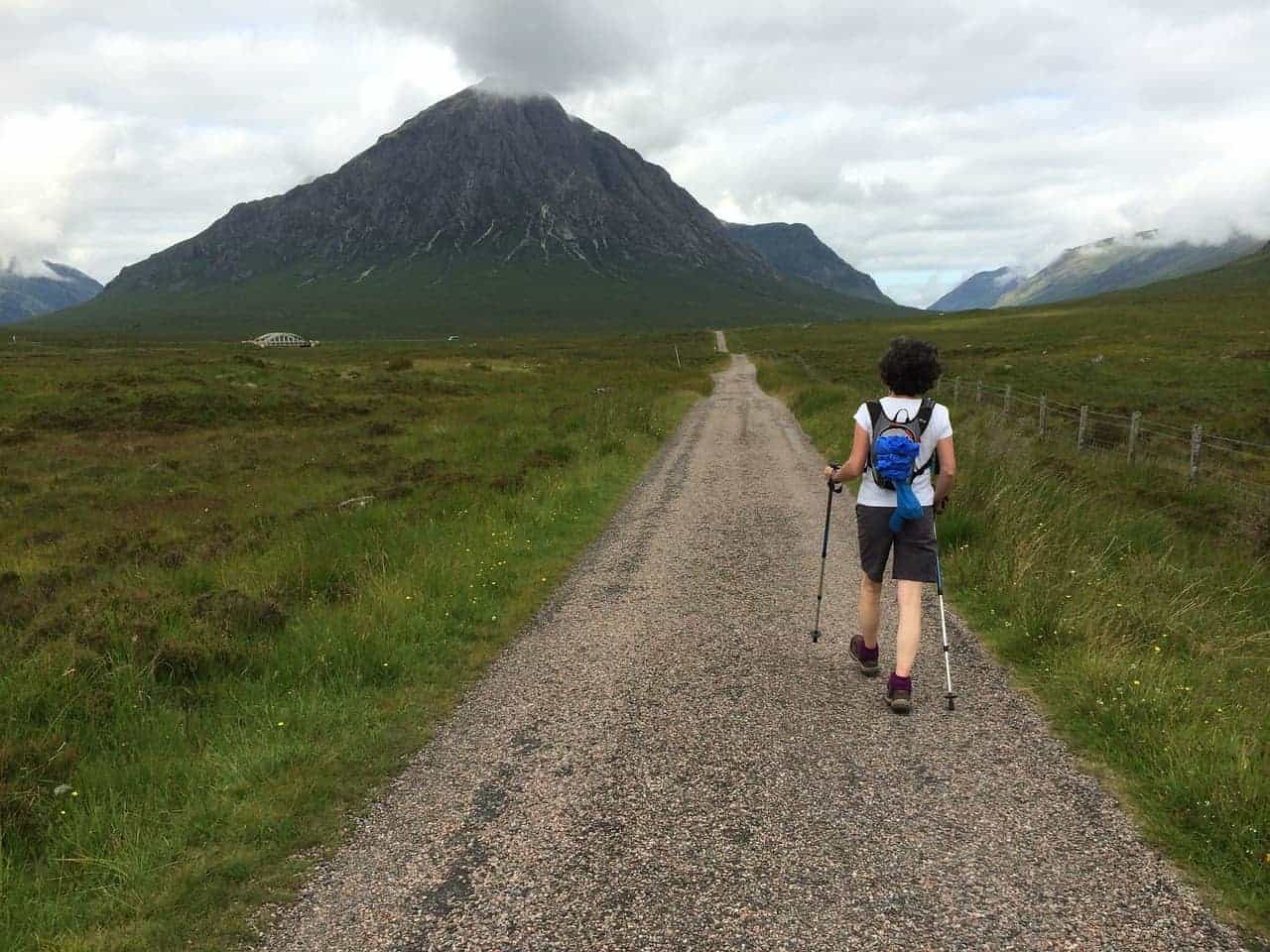
5: Take walking poles. Not only will they help you balance on slippery surfaces but they’ll allow you to poke the ground in front of you so you don’t end up falling into a snow-covered hole.
6: Take a map and compass and learn how to use them. After a snowfall, the landscape can change dramatically, and it’s easy to lose your bearings. Ordnance Survey, which offers a selection of extremely robust, waterproof maps, produces by far the best maps.
The main reason to use a paper map instead of a mobile phone app is that you never need to worry about battery life, which is a serious consideration on a multi-day hike.
Buy OS Landranger maps direct from Ordnance Survey.
7: Become familiar with your route before you leave and stick to it. One of the main reasons winter hikers get lost is because they suddenly decide to take a different path and then find themselves unable to get back onto their pre-planned track.
If you want to keep costs down the Walk Highlands website is a fantastic resource for walking routes in Scotland, and Google Maps is very handy as a GPS – but make sure you have a power pack in your bag as a backup.
8: If you happen to find yourself lost in the middle of nowhere in the winter, there’s one thing that could mean the difference between life and death. That ‘thing’ is Scotland’s network of bothies, which are weatherproofed huts located in the remotest regions of the country.
Bothies are always unlocked, and they’re free to use, with the only requirement being that you leave them clean and tidy after you’ve used them. I recommend getting this guidebook for finding bothies in the Highlands: The Scottish Bothy Bible.
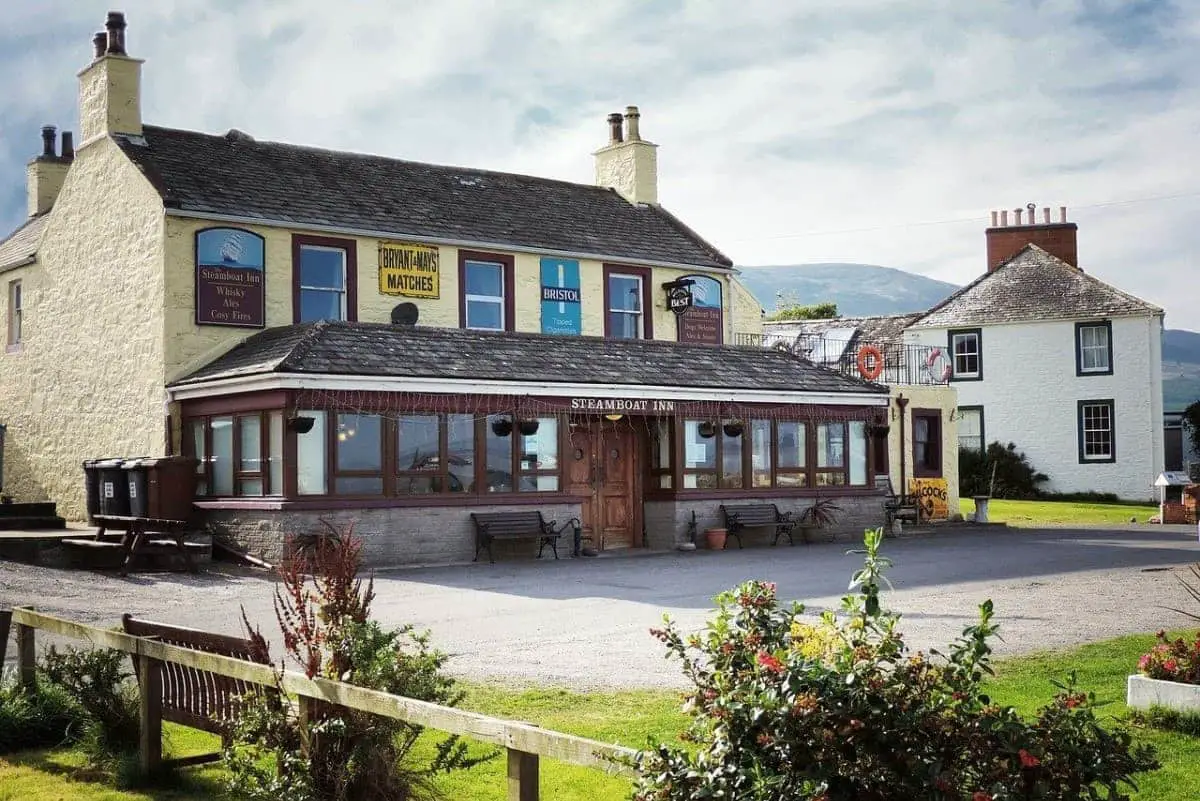
Where to Stay in the Highlands
Visiting the Highlands is different from visiting the rest of Scotland for many reasons, not least because it’s such a vast area with towns and villages spread miles and miles apart. In fact, Highland settlements are so spread out that some areas have fewer people than the Steppes of Russia!
That means tourists can have a wonderful time exploring the great outdoors in peace and quiet, but it also means it’s very difficult to find accommodation.
While you could pack a tent, you’ll have to brave the midges in summer and it will be absolutely freezing in winter. Camper vans are an option, but unless you already own one you’ll have to pay upwards of £1000 per week for a rental.
That leaves hotels and B&Bs, which are probably best for the majority of people travelling to the Highlands. Because there are so few of them and because they’re so popular, it’s very important to book your accommodation well in advance in order to secure a room, and from personal experience, I suggest booking at least 6 months beforehand if you’re planning a summer trip.
One thing to be aware of is that hotels ramp up their prices during the tourist season and even more so during the school holidays, so by planning a little, you could save 50% or more by simply adjusting the weeks of your stay.
The following is a list of more tips that will save you money when booking your next hotel in the Highlands of Scotland:
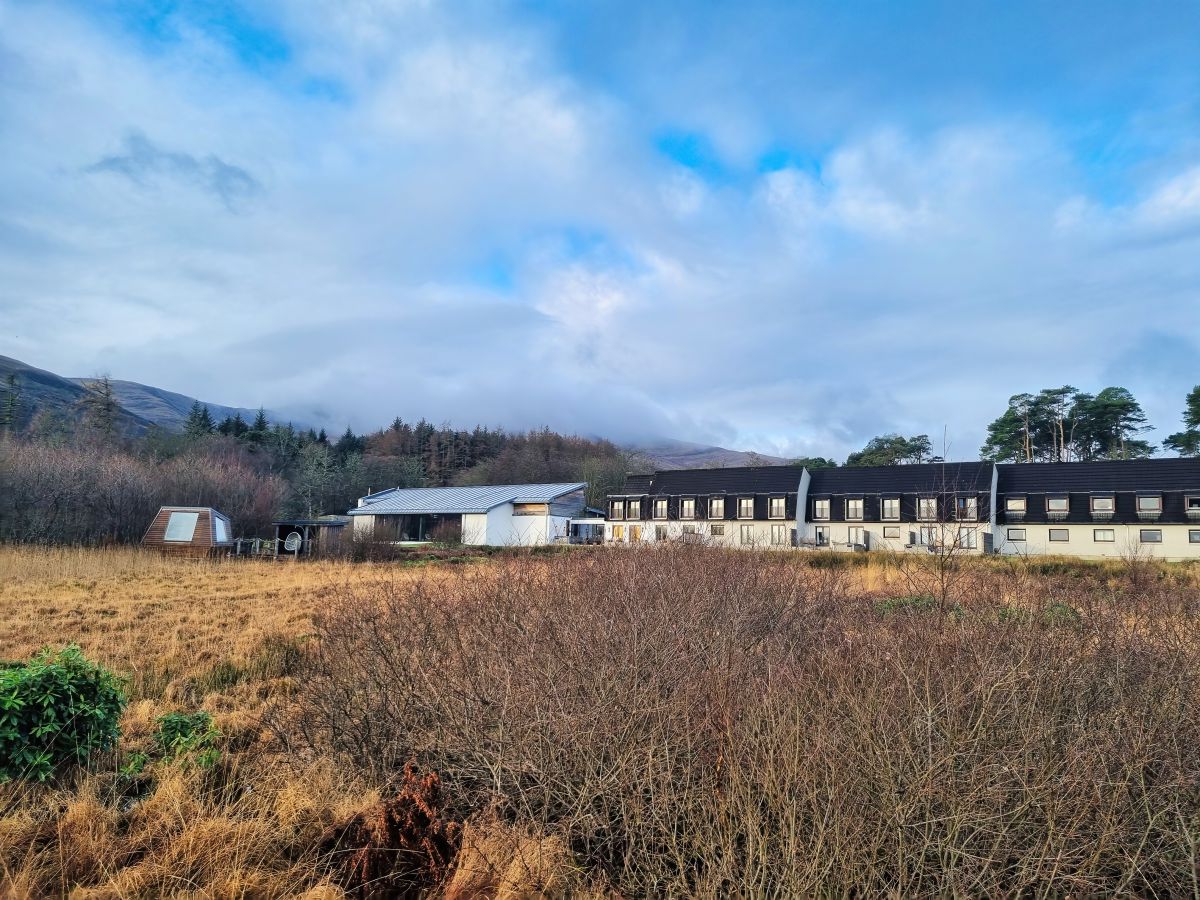
1: Although the cheapest time of year for hotel rooms is winter, in some places, like Inverness, the prices will ramp up again the closer you get to Christmas due to the Christmas markets and festivals. If you’re after a cheap winter holiday in the Highlands, check the prices in early January, when hotels are desperate for business.
2: Two suggestions for saving money on chain hotels like Marriott are to book via their own website, which is often cheaper than price comparison websites, and join their loyalty points scheme while you’re there. Most of these schemes build points for each stay, which you can later redeem for rewards such as a free meal in the hotel restaurant or a free overnight stay.
3: Hostels are by far the cheapest option for cheap accommodation in Scotland, and the days of sticky carpets and cold, dingy rooms are long gone. Most even offer single rooms with an en-suite bathroom these days. In Inverness, take a look at Bazpackers, and in Fort William, I recommend Ben Nevis Inn Rooms.
4: Another alternative for cheap overnight accommodation is to find a Groupon deal. The only thing to bear in mind is that you’ll likely have to book well in advance, so Groupon isn’t much good for an impromptu overnight stay.
5: Airbnb is a fantastic option for the budget-conscious traveller and there are some real bargains to be had, plus you can cook your own meals which saves even more money. A recommended alternative to AirBnB is Vrbo.
6: Even cheaper than hostels and Airbnb is pitching a tent. It’s legal to pitch your tent wherever you like in Scotland as long as it isn’t on privately owned land, but make sure you abide by the Scottish Outdoor Access Code. If you need help finding a suitable tent, check out this article: The 5 Best Tents for Summer Camping in Scotland.
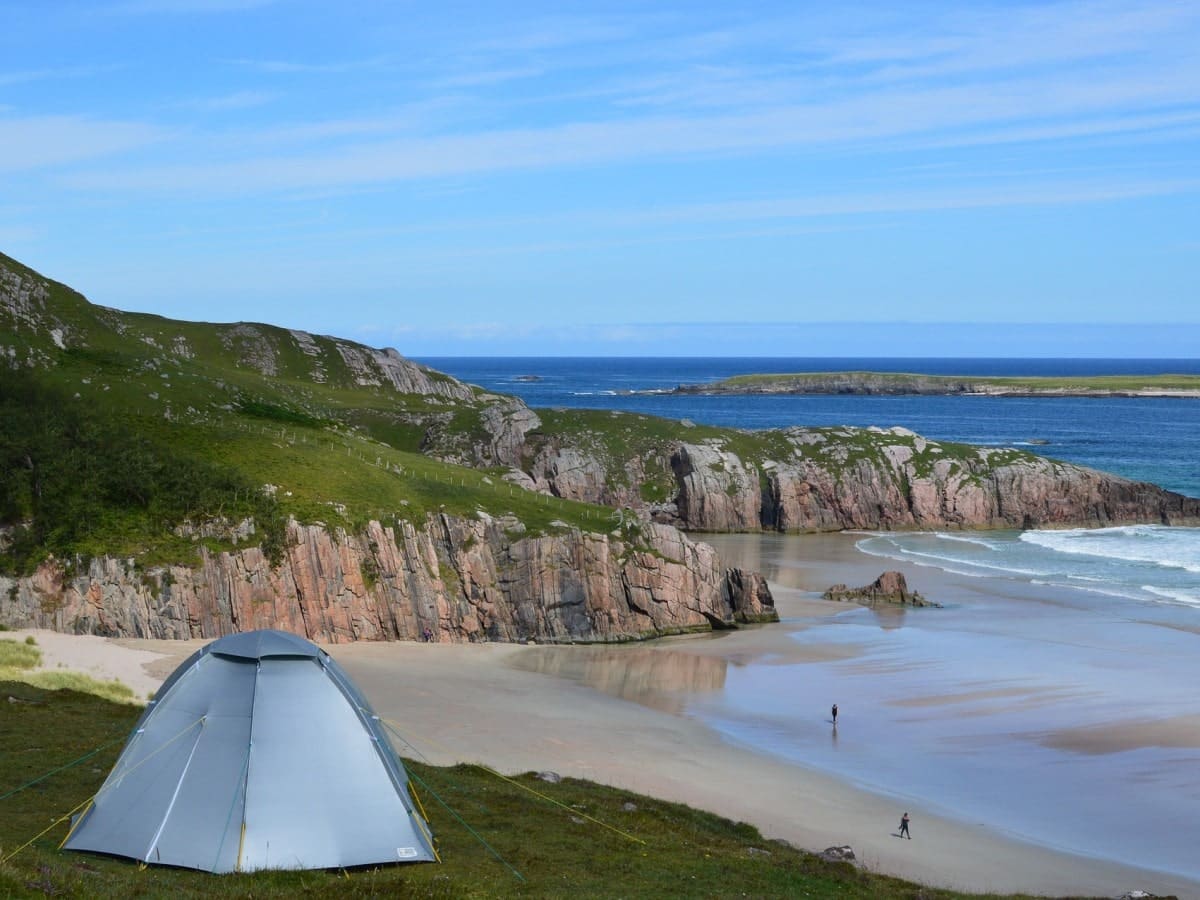
7: As already mentioned, Scotland has lots of bothies, so use them! Although they’re not exactly up to hotel standards, they’re completely free, so check out The Mountain Bothies Association for more information about them. Another great resource is The Scottish Bothy Bible, which you can buy on Amazon.
Where to Stay in Fort William
- Victoria House B&B. Lochy Bridge, Lochyside, Fort William, PH33 7NX. Full Scottish breakfast, free parking, non-smoking rooms, pets allowed, free WiFi, family rooms, tea/coffee maker in all rooms, full Scottish breakfast.
- Alexandra Hotel. The Parade, Fort William, PH33 6AZ. Free parking, non-smoking rooms, restaurant, facilities for disabled guests, free WiFi, family rooms, tea/coffee maker in all rooms, bar, very good breakfast.
- Ardrhu House, Fort William. Ardrhu House Onich, Fort William, PH33 6SD. Free parking, non-smoking rooms, beachfront, restaurant, facilities for disabled guests, free WiFi, tea and coffee makers in all rooms, and a good breakfast.
Where to Stay in Inverness
- Chieftain Hotel, 2, Millburn Road, Inverness, IV2 3PS. Free parking, non-smoking rooms, restaurant, free WiFi, pets allowed, family rooms, bar, and superb breakfast.
- Culliss House B&B. Culliss House, 15 Culduthel Road, Inverness, IV2 4AG. Free parking, non-smoking rooms, free WiFi, tea and coffee makers in all rooms, and an exceptional breakfast.
- Heathmount Hotel. Kingsmills Road, Inverness, IV2 3JU. Free parking, non-smoking rooms, restaurant, pets allowed, family rooms, bar, superb breakfast.
Where to stay in Braemar & Cairngorms
- Braemar Lodge Hotel. Glenshee Road, Braemar, AB35 5YQ. tea/coffee maker in all rooms, bar, breakfast.
- The Gordon Guest House. Station Square, Ballater, AB35 5QB. Non-smoking rooms, free parking, free WiFi, exceptional breakfast.
- Hilton Grand Vacations Club at Craigendarroch. Braemar Road, Ballater, AB35 5XA. Swimming pool, spa and wellness centre, non-smoking rooms, restaurant, facilities for disabled guests, free parking, bar, breakfast.
Where to Stay In Crianlarich
- Best Western The Crianlarich Hotel. Main Street, Crianlarich, FK20 8RW. Free parking, non-smoking rooms, pets allowed, free WiFi, tea/coffee maker in all rooms, bar, very good breakfast.
- Inverardran House Bed and Breakfast. Crianlarich, FK20 8QS. Free parking, free WiFi, tea/coffee maker in all rooms, exceptional breakfast.
- Craigbank Guest House. Main Street, Crianlarich, FK20 8QS. Free parking, free WiFi, tea/coffee maker in all rooms, superb breakfast.
Protect Your Family From Scotland's Biting Midges
- Powerful, reliable protection for up to 8 hours
- Water- and sweat resistant
- Repels midges, mosquitoes, horse flies, sand flies, fleas and ticks
- Safe for use on adults, children over 30 months and pregnant women
- Non-sticky, moisturising with a pleasant fragrance
- Packaging may vary
How to Get Around the Highlands
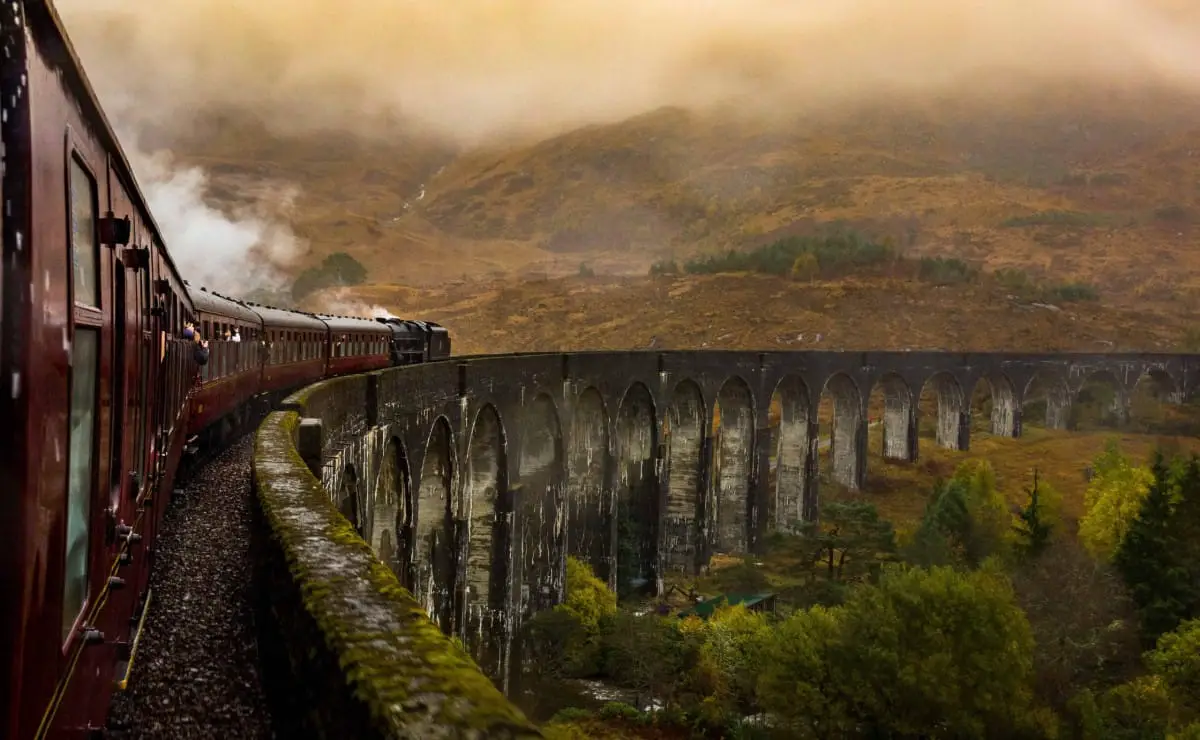
Getting anywhere in the Highlands takes much longer than it does when you’re in the main cities, purely because it’s such an enormous region and everything is spread so far apart. However, there are a few ways to get to the Highlands, so don’t let that deter you.
Flights to the Highlands
If you’re an international visitor you’ll arrive in Scotland at one of our main international airports depending on where you’re coming from – most likely Aberdeen airport (Address: Dyce, Aberdeen, AB21 7DU), Glasgow airport (Address: Paisley, PA3 2SW), or Edinburgh airport (Address: Edinburgh EH12 9DN).
Once at these hubs, you have the option of continuing your journey inland by train or car or booking an internal flight from Aberdeen or Glasgow, with the former serving Orkney and Shetland and the latter connecting to the Western Isles.
The infrastructure between these airport hubs is excellent, and you can take a train from Edinburgh and be at Glasgow in less than an hour, so flying into the capital city and ending up on remote islands like Barra and Tiree is remarkably easy. You’ll find everything you need to know about travelling to Scotland by air in this article: The Complete Guide to Scotland’s Airports.
Using Trains in the Highlands
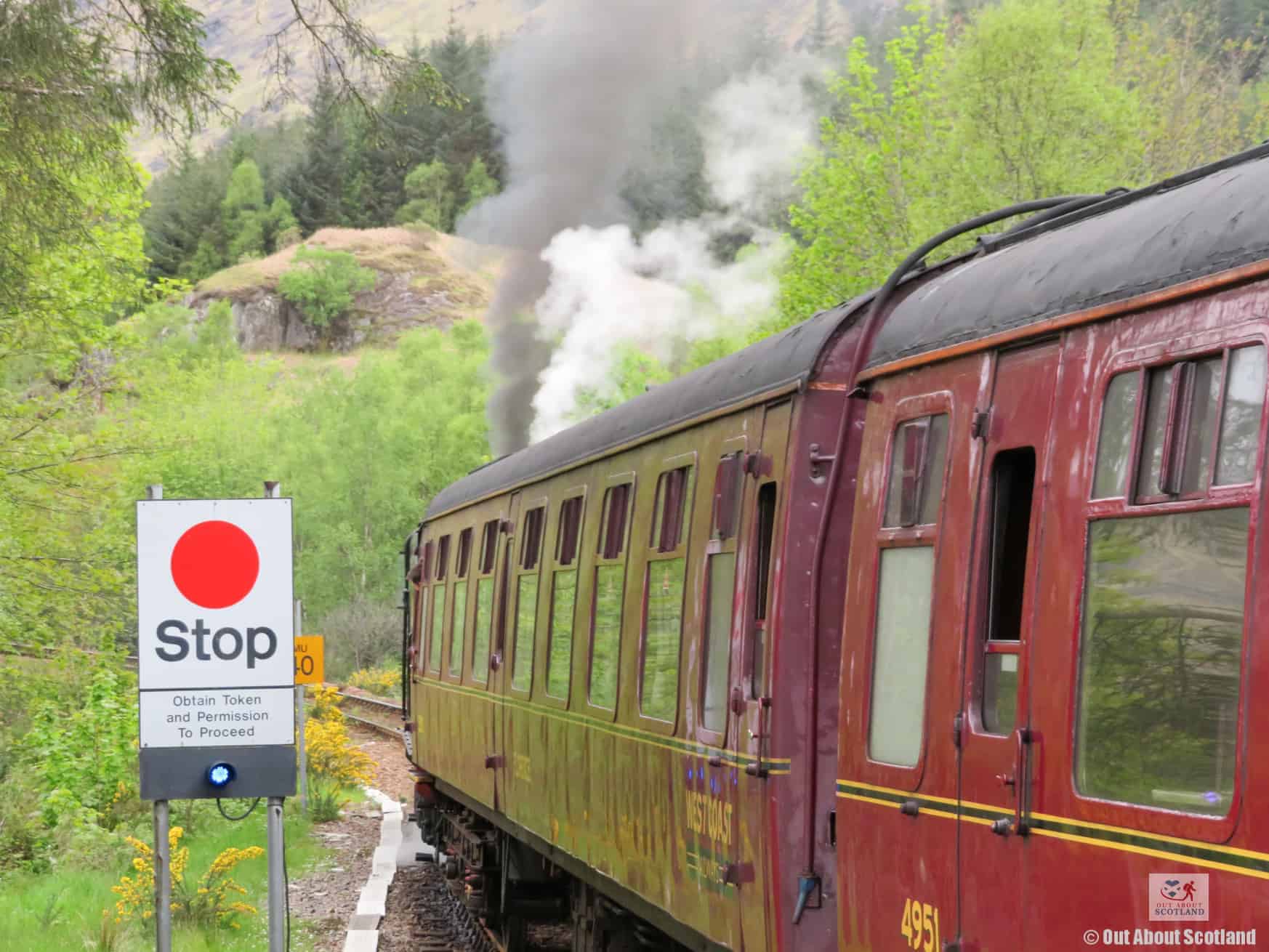
Scotland has a love/hate relationship with its train network, mainly because the services are generally overpriced and subject to frequent delays, but they can be an easy way to get to the Highlands if you do a bit of planning before you set off.
The West Highland Line is particularly recommended because it’s extraordinarily pretty along much of its route,whether you’re travelling from Glasgow to Oban where you can then catch a Calmac ferry to the Hebrides Islands, or Glasgow to Fort William, where you can step on board the Jacobite steam train that runs to the northwest fishing town of Mallaig.
If you’re intending to use the train you really should experience this route to Mallaig as it’s absolutely beautiful and has, in fact, been described as one of the greatest train journeys in the world. You’ll find out more about it in this article: A Guide to the Jacobite Steam Train.
While these routes are very scenic, they can also be a huge pain in the wallet, so I recommend getting a rail travel pass to save money. The Spirit of Scotland travel pass offers unlimited rail travel throughout Scotland for either 4 or 8 days, and you’ll find stations in most towns in the Highlands.
Alternatively, the Highland Rover travel pass gives you four days of unlimited travel over eight consecutive days, and it also gives you 20% off ferry services to Orkney and Shetland,which can be useful if you’re planning to head to the far north during your holiday. You can also book tickets with The Trainline (my preferred option), which usually saves at least 1/3 compared to purchasing tickets at the station.
Using a Car in the Highlands

By far the most convenient form of transport in the Highlands is a car, but if you’re travelling here from overseas, it can also be the most expensive. Hire car costs can be extortionate once you add on fuel (we have some of the highest fuel prices in Europe) and insurance (likewise), but there are ways you can keep your costs as low as possible.
Unless you’re travelling in a big group I suggest getting as small a car as is practical, and you’ll find something like a Ford Fiesta or Vauxhall Corsa will whisk families around Scotland’s narrow roads economically, safely, and comfortably.
My top tips for getting a hire car in Scotland are to think seriously before splashing out on collision waiver damage (it’s often a rip-off), go direct to a rental company like SIXT or Hertz instead of using a rental car broker, and don’t get conned into taking out a load of vaguely worded insurance you probably won’t need.
Once you’re out on the open road, you’ll find the scenery gob-smacking, and being able to pull over onto the roadside whenever you like is definitely a bonus, but there are some downsides to driving in Scotland.
First and foremost, I strongly advise you not to drive in the Highlands in winter if you’re an inexperienced driver, as weather conditions can change at the drop of a hat and a road that started off clear in the morning can be buried under a thick blanket of snow in the afternoon. That, coupled with the fact that many roads are winding and single-track, can make for treacherous driving conditions.
On the other hand, embarking on a road trip through the Scottish Highlands in summer when it’s green and lush is a not-to-be-missed experience, especially if you head to the far north and drive one of the greatest road journeys in the world on the North Coast 500.
I think it’s safe to say there are more than enough places to visit in the Scottish Highlands that you could easily spend a two-week holiday there and never get bored, and it makes a great alternative to spending a summer break in the busy cities of Edinburgh and Glasgow.
Frequently Asked Questions
Where are the Scottish Highlands?
Traditional thinking divides Scotland into two halves, the Highlands and the Lowlands, by a geological line that follows the Highland Boundary Fault. This fault line starts close to the area of Helensburgh, approximately 40 miles north of Glasgow, and extends all the way to Stonehaven in the northeast.
What are the most popular attractions in the Scottish Highlands?
Glencoe and Bidean Nam Bian. Ben Nevis in the Nevis Range. Loch Ness and Urquhart Castle. The Cairngorms National Park. Loch Lomond and the Trossachs National Park. Eilean Donan Castle. Glenfinnan Monument. Duncansby Head.
How do I tour the Highlands by train?
The West Highland Line runs from Glasgow to Oban where you can catch a Calmac ferry to the Inner Hebrides or you can take the train from Glasgow to Fort William.
You can then step on board the Jacobite steam train which runs to the northwest fishing town of Mallaig.
What towns and villages should I visit in the Highlands?
Applecross sits on a peninsula in Strathcarron and is notable for the Bealach na Ba pass, which is one of the highest roads in the UK, reaching 2,053 feet at its highest point.
Braemar is best known as the home of the annual Braemar Gathering and Highland Games, held in September.
Glencoe is a popular destination for hikers, and it’s a great starting point for treks into the surrounding Glencoe mountains.
Fort William is the starting point for the Jacobite steam train. The town is known as the outdoor capital of the UK.
Fort Augustus is located on the southernmost tip of Loch Ness and is the main hub for exploring the loch after Inverness, which is located to the north.




